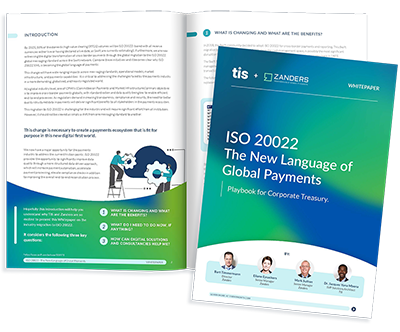A Blueprint for Treasury
This whitepaper explores the global shift to ISO 20022, a new messaging standard for payments that enhances data quality, compliance, and automation. This change will have wide-ranging impacts across messaging standards, operational models, market infrastructure, and payments capabilities. Learn how corporates can prepare for the transition and leverage digital solutions for success.
Key Takeaways of the Whitepaper
Structured Data Unlocks Efficiency
ISO 20022 enables richer, standardized data that improves automation, reconciliation, and compliance.
Migration Requires Action Now
With MT messages being phased out by 2025, corporates must assess systems, formats, and bank readiness.
Digital Partners Accelerate Readiness
Simplify migration, reduce friction, and unlock strategic value in treasury operations with the right guidance.
